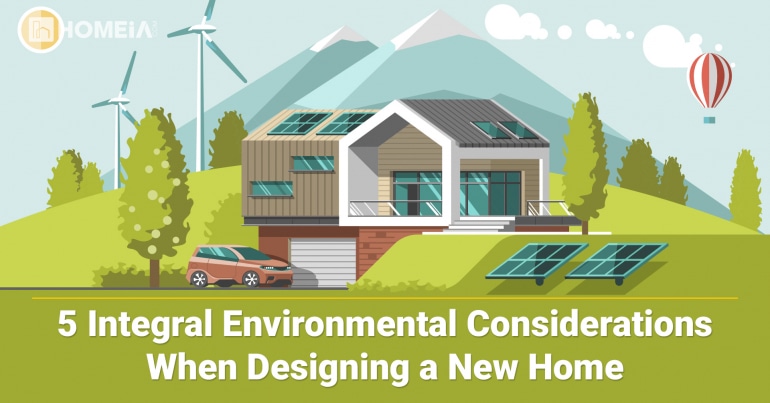What Are The Considerations For Designing Energy-efficient Schools?

Ensuring that our schools are energy-efficient is a crucial task in the fight against climate change. By taking simple steps to reduce energy consumption, we can all play our part in creating a sustainable future for our planet. The Schools' Climate Education South initiative is working with schools across the region to help them become more energy efficient. Here are some key points to consider when thinking about energy efficiency in schools:
1. Conduct an energy audit
The first step in improving energy efficiency in any building is to conduct an energy audit. This involves taking a detailed look at how energy is used in the building, and identifying areas where improvements can be made. An energy audit will help you understand how much energy your school is using, and where that energy is being used. This information will be invaluable when it comes to devising a plan to reduce energy consumption.
2. Switch to LED lighting
One of the easiest ways to reduce energy consumption in schools is to switch to LED lighting. LED lights use up to 80% less energy than traditional incandescent bulbs, and can last up to 25 times longer. They also generate less heat, which can help to reduce cooling costs in the summer months. By switching to LED lighting, schools can make a significant impact on their energy bills, while also helping to reduce their carbon footprint.
3. Insulate your building
Insulating your building is another key step in improving energy efficiency. Proper insulation will help to keep the heat inside during the cooler months, and prevent it from entering the building during the summer. This can help to reduce energy consumption by up to 30%, and will also make the building more comfortable for students and staff. Insulation can be installed in walls, roofs, and floors, and there are a range of different materials available to suit different budgets and requirements.
4. Install programmable thermostats
Installing programmable thermostats in your school can also help to reduce energy consumption. These devices allow you to set the temperature in different parts of the building at different times of the day, so that heating and cooling are only used when they are really needed. This can help to reduce energy consumption by up to 10%, and can also help to extend the life of your heating and cooling systems.
5. Encourage sustainable travel
Encouraging sustainable travel is another key way to reduce energy consumption in schools. By promoting active travel, such as walking, cycling, and scootering, schools can reduce the number of cars on the road, and help to reduce emissions. Encouraging students to take public transport can also help to reduce energy consumption, as can carpooling schemes for staff.
6. Use renewable energy sources
Using renewable energy sources is another way to reduce energy consumption in schools. Solar panels, wind turbines, and biomass boilers can all provide a source of renewable energy that can be used to power the school. While the initial investment in these technologies can be high, they can provide significant long-term savings, as well as helping to reduce carbon emissions.
7. Ensure your staff are trained in energy efficiency
Finally, it is important to ensure that your staff are trained in energy efficiency. By providing training and resources, you can help to ensure that everyone in the school is aware of the importance of energy efficiency, and is taking steps to reduce energy consumption. This can include things like turning off lights and electronics when they are not in use, and using energy-efficient appliances wherever possible.
Conclusion
Improving energy efficiency in our schools is an important step in creating a sustainable future for our planet. By taking simple steps like those outlined above, schools can make a significant impact on their energy bills, and help to reduce their carbon footprint. While the initial investment may be high, the long-term benefits of improved energy efficiency are clear. So let's all work together to create a more energy-efficient future for our schools, and for our planet.
Frequently Asked Questions
Why is energy efficiency important in schools?
Improving energy efficiency in schools is important for a number of reasons. Firstly, it can help to reduce energy bills, which can free up funds for other important things like resources and teaching staff. Secondly, it can help to create a more comfortable learning environment for students and staff, as well as reducing the carbon footprint of the school. Finally, it is an important way for schools to lead by example in the fight against climate change.
What is an energy audit?
An energy audit is a detailed assessment of how energy is used in a building. It involves looking at things like heating and cooling systems, lighting, and insulation, and identifying areas where energy consumption can be reduced. An energy audit is an important first step in improving energy efficiency, as it provides a comprehensive picture of how energy is being used, and where improvements can be made.
What are some other ways to reduce energy consumption in schools?
There are a range of other steps that schools can take to reduce energy consumption. These include things like installing double-glazed windows, using energy-efficient appliances, and encouraging staff and students to switch off lights and electronics when they are not in use. Schools can also explore the use of renewable energy sources like solar and wind power, as well as implementing measures to reduce water consumption.



Post a Comment for "What Are The Considerations For Designing Energy-efficient Schools?"